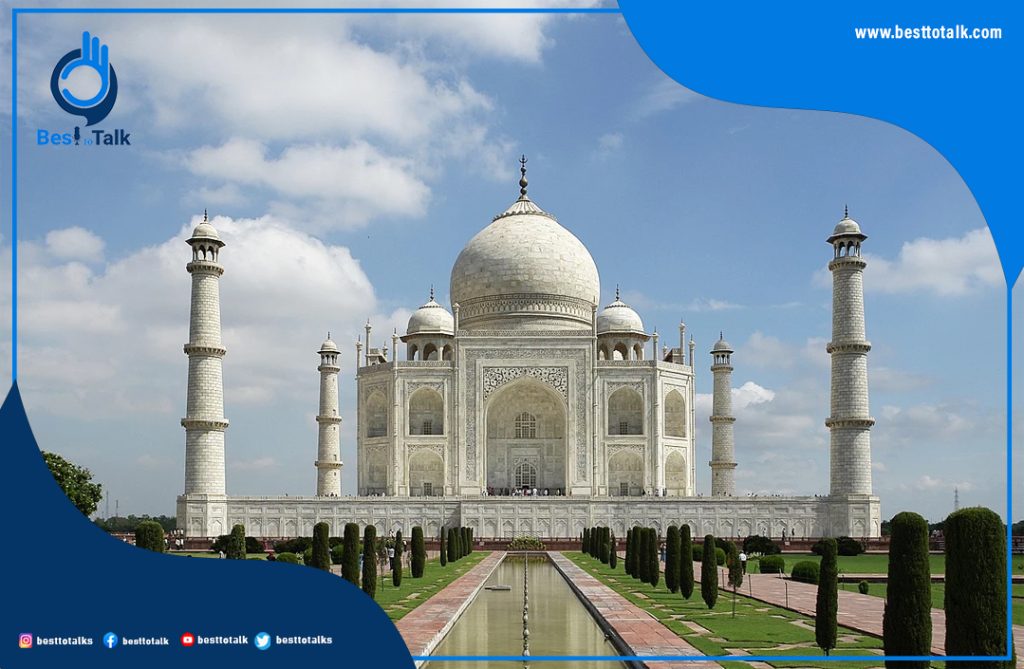Best To Talk For Taj Mahal – Standing as a testament to timeless love and architectural brilliance, the Taj Mahal is not just a monument; it’s a symbol of eternal devotion and the epitome of architectural excellence. Situated in Agra, India, this iconic structure draws millions of visitors each year, captivating them with its grandeur and the romantic tale it embodies.
History:
Commissioned in 1632 by the Mughal emperor Shah Jahan in memory of his beloved wife Mumtaz Mahal, the Taj Mahal is a mausoleum of breathtaking beauty. Mumtaz Mahal, the emperor’s favorite wife, passed away during childbirth, leaving Shah Jahan grief-stricken. In his mourning, he vowed to build a mausoleum that would be unparalleled in its magnificence, a monument that would immortalize their love for centuries to come.
Architecture:
Designed by a team of skilled architects, artisans, and craftsmen, the Taj Mahal blends various architectural styles, including Persian, Islamic, and Indian influences. Made predominantly of white marble, the monument is adorned with intricate carvings, delicate inlays of semi-precious stones, and elaborate geometric patterns. The central dome, flanked by four minarets, is the focal point of the structure, symbolizing the celestial abode of Mumtaz Mahal.
Symbolism:
More than just a mausoleum, the Taj Mahal is a symbol of eternal love and devotion. Its construction represents the pinnacle of Mughal Architecture and Engineering, showcasing the empire’s cultural richness and artistic finesse. The symmetry and precision with which it is built reflect the harmony and balance inherent in the universe, while its serene beauty evokes a sense of peace and tranquility.
Visitors Experience:
Every year, millions of tourists from around the world flock to Agra to witness the splendor of the Taj Mahal Firsthand. As they enter through the grand gateway and catch their first glimpse of the monument, they are often overwhelmed by its sheer beauty and majesty. Whether admiring its exquisite marble facade, strolling through its meticulously landscaped gardens, or capturing its reflection in the tranquil waters of the Yamuna River, visitors cannot help but be moved by the profound sense of romance and reverence that permeates the atmosphere.
Preservation Efforts:
Despite its enduring beauty, the Taj Mahal faces numerous challenges, including pollution, environmental degradation, and the effects of mass tourism. Recognizing the need to protect this cultural treasure, various conservation efforts have been undertaken, including measures to reduce pollution, restrict visitor numbers, and restore the monument to its former glory. Through these efforts, authorities strive to ensure that future generations can continue to marvel at the splendor of the Taj Mahal for centuries to come.
Conclusion:
As one of the most recognizable symbols of love and architectural excellence, the Taj Mahal continues to inspire awe and admiration in all who behold it. From its poignant history to its breathtaking beauty, this iconic monument stands as a testament to the enduring power of love and the timeless appeal of great art and architecture. Visiting the Taj Mahal is not just a journey to a historic site; it’s an experience that touches the soul and leaves an indelible impression on the heart.

